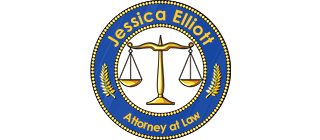As noted above, you can find information about assets, liabilities, and shareholder equity on a company’s balance sheet. The assets should always equal the liabilities and shareholder equity. This means that http://prikol.biz/wgallery_list.php?gallery=22_money&page=1&sort=5 the balance sheet should always balance, hence the name. If they don’t balance, there may be some problems, including incorrect or misplaced data, inventory or exchange rate errors, or miscalculations.
What are examples of assets and liabilities on a balance sheet?
As a core concept in modern accounting, this provides the basis for keeping a company’s books balanced across a given accounting cycle. How assets are supported, or financed, by a corresponding growth in payables, debt liabilities and equity reveals a lot about a company’s financial health. For now, suffice it to say that depending on a company’s line of business and industry characteristics, possessing a reasonable mix of liabilities and equity is a sign of a financially healthy company. If a company takes out a five-year, $4,000 loan from a bank, its assets (specifically, the cash account) will increase by $4,000. Its liabilities (specifically, the long-term debt account) will also increase by $4,000, balancing the two sides of the equation.
- Both fixed and intangible assets play a critical role in the overall value of a company, and understanding their valuation methods helps ensure the accuracy of financial statements.
- Valuing intangible assets can be more challenging than valuing fixed assets, as their value is often subjective and may not be easily observable in the market.
- The accounting equation helps to assess whether the business transactions carried out by the company are being accurately reflected in its books and accounts.
- If it reads positive, the company has enough assets to cover its liabilities.
- Higher profitability ratios indicate a company’s success in generating profits and effectively managing its financial transactions, which can lead to increased investor confidence and a higher net worth.
The most important equation in all of accounting
However, even in this circumstance, the liability holder’s claim is against the firm rather than the asset. Many definitions of assets have been proposed and used in business and academic research. For the purposes of this relatively brief presentation, an asset is defined as something of value owned or controlled by the entity. A financial professional will offer guidance based on the information provided and offer a no-obligation call to better understand your situation.
Unit 2: Accounting Principles and Practices
- Preferred stock is assigned an arbitrary par value (as is common stock, in some cases) that has no bearing on the market value of the shares.
- At this point, let’s consider another example and see how various transactions affect the amounts of the elements in the accounting equation.
- To learn more about the balance sheet, see our Balance Sheet Outline.
- Companies typically select an ending period that corresponds to a time when their business activities have reached the lowest point in their annual cycle, which is referred to as their natural business year.
For a company keeping accurate accounts, every business transaction will be represented in at least two of its accounts. For instance, if a business takes a loan from a bank, the borrowed money will be reflected in its balance sheet as both an increase in the company’s assets and an increase in its loan liability. Next, let’s take a look at the balance sheet, which mirrors some of those same numbers. We see our total assets equal $260,000, and the total for our liabilities and equity also equals $260,000. As we continue working today, we’ll see what can unbalance them and how to fix that.
Real-World Example of the Accounting Equation
You should also include contingent liabilities or liabilities that might land in your company’s lap. This could include the cost of honoring product warranties or potential lawsuits. http://portrait-photos.org/keywords/nature?skip=195 In some instances, you might be able to quantify less tangible assets, like your company’s positive reputation in your community or an individual employee who has specific expertise.
So, we’ll create a long-term liability for the loan, which is $200,000. When you’re adding a property, you might want to link an asset account to that property. In this case, I’m going to pick a number and say the property is worth $250,000.
Who Uses the Accounting Equation?
To keep the books at your company balanced, your assets should always equal the combined total of your liabilities and owners’ equity. The accounting equation states that a company’s total assets are equal to the https://www.homereonflint.com/easy-adorning-ideas-for-the-kitchen.html sum of its liabilities and its shareholders’ equity. The balance sheet formula remains constant, reflecting the accounting equation that assets must always equal the sum of liabilities and shareholders’ equity.










What do you think?